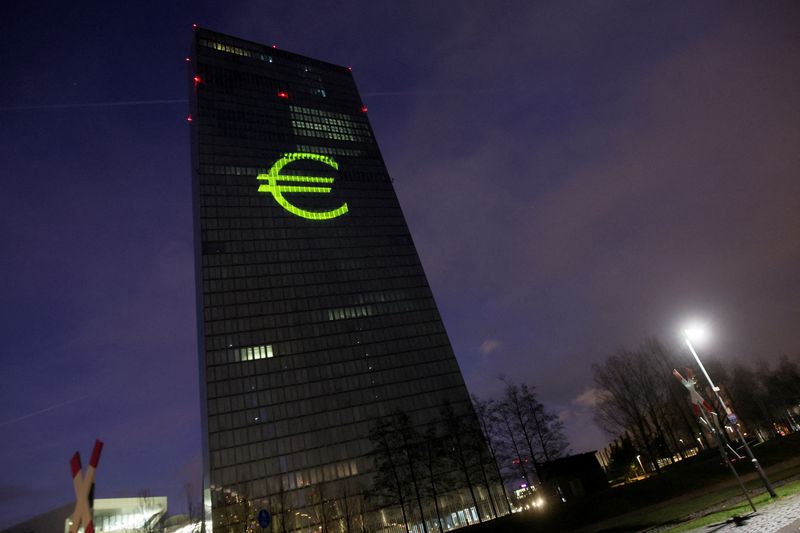Investing.com The European Central Bank (ECB) has kept interest rates at 4% since September 2023, said analysts at Deutsche Bank (ETR:DBKGn) Research in a note.
“In June the ECB initiated the easing cycle with a 25bp cut. Our current baseline has the ECB cutting rates twice more in 2024, with 25bp cuts in September and December, and a terminal rate in a landing zone of 2.00-2.50% later in 2025 or early in 2026,” the analysts said.
To facilitate quicker and more substantial rate cuts, the ECB needs to navigate several critical conditions.
Firstly, the ECB’s ability to cut rates rapidly hinges on its perception of medium-term inflation risks. The ECB is particularly concerned with the possibility of inflation undershooting its 2% target in the medium term.
This concern is influenced by various factors, including the risk of a hard-landing for the economy and the stability of inflation expectations.
Analysts at Deutsche Bank Research note that while the risk of a hard-landing has increased, it is not yet a foregone conclusion.
Weaker labor market conditions and potential fiscal tightening could heighten these risks.
Currently, there is some evidence of a softening labor market, with a composite employment PMI falling below 50, yet this has not yet translated into significant job losses or reduced wage pressures.
The ECB will need to see clearer indications that labor market weakness is affecting wage growth.
Moreover, fiscal policy expectations, including the withdrawal of energy shielding measures and the reactivation of fiscal rules, could further dampen economic recovery, influencing the ECB’s decisions.
The ECB’s stance on inflation being transitory or persistent is another crucial factor. The bank initially hiked rates rapidly in response to unexpected inflation, and to reverse course as quickly as it hiked would require a belief that inflation is now transitory.
Given that inflation remains above target and there is no immediate sign of a dramatic decrease in inflation metrics, the ECB is unlikely to cut rates as swiftly as it raised them.
Deutsche Bank Research flags that current inflation expectations, though slightly lower, are still above levels that would typically prompt significant easing. Without a significant drop in these expectations, the ECB may be hesitant to accelerate rate cuts.
The concept of the neutral rate also plays a significant role in the ECB’s policy decisions. When the ECB initially hiked rates in 2022, it aimed to return to a neutral level of about 1.50-2.00%.
With current rates at 3.75%, reducing to a neutral level implies further cuts. Analysts suggest that if the ECB identifies the neutral rate as being around 2.00-2.50%, it could justify more rapid rate reductions, particularly if inflation risks diminish.
The bank's previous experience with rapid hikes when rates were far from neutral suggests that it could also cut rates quickly if necessary.
Lastly, the current policy stance could be considered counterproductively restrictive, which might prompt faster rate cuts. If financial conditions were to tighten sharply or if credit conditions deteriorated significantly, the ECB might respond more aggressively.
However, recent data indicate that financial conditions are not currently tightening in a way that would necessitate immediate action.
Analysts at Deutsche Bank observe that while real interest rates have been rising, there is no clear evidence that the current policy stance is excessively restrictive.
Deutsche Bank Research suggests that while the market currently anticipates modest rate cuts in September and December, there is room for a more aggressive approach if downside risks become more pronounced.
The ECB will remain attentive to evolving data and broader economic conditions. Any shift towards weaker inflation and growth could prompt faster rate reductions.
